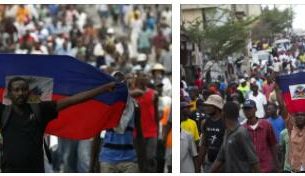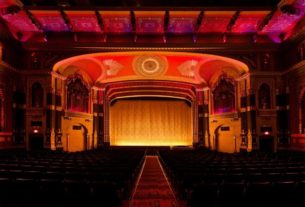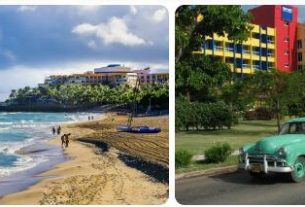Nicaragua is a democratic state, a unitary presidential republic. The 1987 Constitution is in force with amendments in 1995 and 2000, which fixed the principle of separation of powers, the depoliticization of the army, the de-ideologization of education and the expansion of the powers of parliament. Administrative division: 15 departments (Boaco, Granada, Carazo, Leon, Madriz, Managua, Masaya, Matagalpa, Nueva Segovia, Rivas, Rio San Juan, Jinotega, Chinandega, Chontales, Esteli) and 2 autonomous regions (north and south Atlantic), 145 municipalities. Major cities: Managua, Leon, Granada, Matagalpa. Public administration is based on the principles of separation of the executive, legislative, judicial and control (Inspector General’s office) branches of power, aimed at building a state of law, respect for human rights and the development of a multi-ethnic nation. The supreme body of legislative power is the unicameral National Assembly, headed by the Leading Junta. Executive power is exercised by the president, who heads the government and is the supreme commander in chief. The head of state is President Enrique Bolanos (2001-06), one of the leaders of the Liberal Constitutional Party (LCP), which is part of LA. Vice President – Jose Rizo Castillon. The head of the Leading Junta of the National Assembly is Jaime José Cuadra Somarriba. According to the electoral law, the president and vice president are elected in general elections for 5 years, re-election is allowed only after the end of the term of the next president. 90 deputies of the National Assembly (20 on national lists, 70 on departmental and autonomous districts), elected for 5 years, elect the leadership of the chamber. Former President and Candidate, loser of the second round of elections, are members of Parliament. In municipalities, power is exercised by elected mayors (alcaldes) and municipal councils. The leading positions are occupied by the ruling LKP (53 seats in parliament) and the opposition FSLN (38). There are small parties of conservative, demo-Christian and social-democratic orientation. Main business organizations: Association of Exporters of Non-traditional Products, Association of Animal Breeders, Chamber of Commerce and Industry. Among non-governmental organizations, the most active are human rights groups, women’s associations, associations of veterans; the Confederation of Trade Union Unity, the General Confederation of Workers, and the Association of Rural Workers operate. The internal policy of the Bolanos government is aimed at eliminating the consequences of natural disasters (Hurricane Mitch, floods), reduction of unemployment (20% of the economically active population) and poverty (50% of the population), the implementation of sustainable development projects and the fight against corruption. In the context of a budget deficit, the government continues to privatize state-owned enterprises, focuses on promoting exports and attracting foreign aid. Foreign policy is characterized by close cooperation with the United States – the main trading partner, the EU and the countries of Central America. During the president’s trip to Europe and the United States in April 2003, agreements were reached on the allocation of aid to Nicaragua in the amount of $300 million. The territorial dispute between Nicaragua and Colombia over the San Andres and Providencia archipelago has not been resolved. The armed forces include the army, air force and navy. Compulsory military service has been abolished, the army is recruited on a professional basis. Check diseaseslearning for political system of Nicaragua.
Science and culture of Nicaragua
The revolution of 1979 gave impetus to the development of education (in 1980 a campaign was carried out to eliminate illiteracy) and science. In Nicaragua. there are the National Institute of Technology, the Institute of Nicaraguan Studies and a number of universities: the Autonomous American University, the Autonomous National University of Nicaragua, the Catholic University, the Iberoamerican University of Science and Technology, the National Agrarian University, the National Institute of Technology, the National University of Engineering, the University del Valle, the Nicaraguan Institute of Territorial Research, Central American University of Managua. Major libraries: National Archives and Library “Roberto Inser Barquero” of the Central Bank of Nicaragua; The National Museum and the Ateneu Gallery operate in the country. Nicaragua has one public and 7 private television channels, 4 daily newspapers and 14 radio stations. In the literature of Nicaragua, the works of poets and prose writers stand out, whose work belongs to the romantic and modernist trends. Major writers: prose writers and poets Asarias Palais, Alfonso Cortes, Salomon de la Selva, playwright Pablo Antonio Cuadra. Sergio Ramirez, poetesses Carla Sanchez and Blanca Castellón, poets Juan Sobalvarro and Danilo Lopez stand out among contemporary writers. Fine arts are dominated by painting and graphics. Alejandro Arosteguis is a sculptor and author of monumental frescoes, Telma Gomez is a primitive artist, Orlando Sobalvarro is a painter and sculptor. poets Juan Sobalvarro and Danilo Lopez. Fine arts are dominated by painting and graphics. Alejandro Arosteguis is a sculptor and author of monumental frescoes, Telma Gomez is a primitive artist, Orlando Sobalvarro is a painter and sculptor. poets Juan Sobalvarro and Danilo Lopez. Fine arts are dominated by painting and graphics. Alejandro Arosteguis is a sculptor and author of monumental frescoes, Telma Gomez is a primitive artist, Orlando Sobalvarro is a painter and sculptor.



